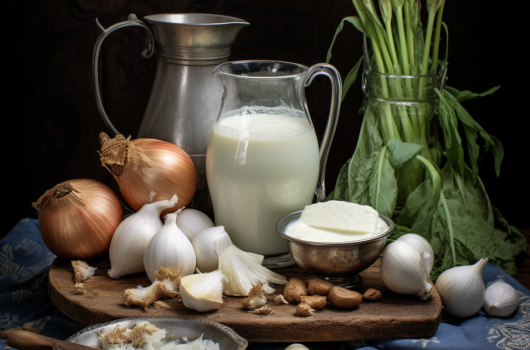Bad breath, also known as halitosis, is a common problem that affects people of all ages. While it may be more commonly associated with adults, toddlers can also experience this unpleasant condition. Toddler halitosis can be concerning for parents, as it not only affects their child’s oral health but may also indicate underlying health issues. In this article, we will explore the causes and concerns related to toddler halitosis, including poor oral hygiene habits, the role of diet in triggering bad breath, potential medical conditions linked to halitosis in toddlers, practical tips for prevention and treatment at home, and when it is necessary to seek professional help.
- Understanding Toddler Halitosis: Causes and Concerns
- Poor Oral Hygiene Habits: A Major Contributor to Bad Breath in Toddlers
- The Role of Diet in Toddler Halitosis: Foods that Trigger Unpleasant Odors
- Identifying Underlying Health Issues: Medical Conditions Linked to Bad Breath in Toddlers
- Practical Tips for Preventing and Treating Toddler Halitosis at Home
- Seeking Professional Help: When to Consult a Pediatric Dentist or Doctor for Persistent Bad Breath
Understanding Toddler Halitosis: Causes and Concerns
Toddler halitosis refers to persistent bad breath in children between the ages of one and three years old. It can have various causes ranging from poor oral hygiene habits to underlying health conditions. One common cause is bacteria buildup on the tongue or teeth due to inadequate brushing or flossing. When these bacteria break down food particles left behind after eating or drinking milk/formula without proper cleaning afterward, they release foul-smelling gases that contribute to bad breath.
Another concern regarding toddler halitosis is its impact on social interactions and self-esteem. As children grow older and become more aware of their surroundings, they may feel embarrassed or isolated if others notice their unpleasant breath odor. This could potentially affect their confidence levels during playdates or school activities.
Poor Oral Hygiene Habits: A Major Contributor to Bad Breath in Toddlers
One major contributor to toddler halitosis is poor oral hygiene habits. Many young children are still learning how to brush their teeth effectively under adult supervision; therefore, they often miss certain areas where bacteria tend to accumulate such as the back molars or along the gumline.
Additionally, toddlers may resist brushing their teeth due to discomfort or a dislike of the taste of toothpaste. This can lead to inadequate cleaning and an increased risk of bad breath. Parents should encourage proper oral hygiene practices by making brushing fun with colorful toothbrushes, flavored toothpaste, and singing songs while brushing together.
The Role of Diet in Toddler Halitosis: Foods that Trigger Unpleasant Odors
Diet plays a significant role in toddler halitosis as certain foods can trigger unpleasant odors. For example, consuming strong-smelling foods like garlic or onions can cause temporary bad breath in both children and adults. In toddlers, this effect may be more pronounced due to their smaller bodies metabolizing these substances differently.
Furthermore, sugary snacks and drinks are known to contribute to dental decay and gum disease if not properly cleaned from the teeth afterward. The bacteria that feed on sugar produce acids that erode enamel and create an environment conducive to bad breath-causing bacteria.
Identifying Underlying Health Issues: Medical Conditions Linked to Bad Breath in Toddlers
While poor oral hygiene habits and diet are common causes of toddler halitosis, it is essential for parents to be aware that persistent bad breath could also indicate underlying health issues. Some medical conditions linked to halitosis in toddlers include sinus infections, tonsillitis, gastroesophageal reflux disease (GERD), respiratory tract infections, or even diabetes.
If a child’s bad breath persists despite maintaining good oral hygiene practices and dietary changes have been made without improvement, it is crucial for parents to consult with a pediatric dentist or doctor for further evaluation.
Practical Tips for Preventing and Treating Toddler Halitosis at Home
Preventing toddler halitosis starts with establishing good oral hygiene habits early on. Here are some practical tips for parents:
1. Start cleaning your child’s mouth before they even have teeth – wipe their gums gently with a clean, damp cloth after feedings.
2. Once teeth start erupting, use a soft-bristled toothbrush and water to clean them twice a day. Introduce fluoride toothpaste when your child can spit it out (around the age of two).
3. Teach your child proper brushing techniques by demonstrating and supervising their brushing routine until they are capable of doing it independently.
4. Encourage regular flossing once adjacent teeth touch each other to remove food particles trapped between them.
5. Limit sugary snacks and drinks, especially before bedtime, as this reduces the risk of dental decay and bad breath-causing bacteria growth.
Seeking Professional Help: When to Consult a Pediatric Dentist or Doctor for Persistent Bad Breath
While most cases of toddler halitosis can be resolved with improved oral hygiene practices and dietary changes, there are instances where professional help is necessary. Parents should consider consulting a pediatric dentist or doctor if:
1. The child’s bad breath persists despite following good oral hygiene practices consistently.
2. There are signs of pain or discomfort in the mouth such as swollen gums or bleeding.
3. The child has difficulty eating or swallowing.
4. Other symptoms accompany bad breath such as fever, coughing, or weight loss.
Toddler halitosis can be concerning for parents but understanding its causes and implementing preventive measures can help alleviate this issue effectively at home in most cases. By promoting good oral hygiene habits from an early age, monitoring diet choices that may trigger unpleasant odors, being aware of potential underlying health conditions linked to persistent bad breath in toddlers, parents can ensure their children maintain fresh breath while enjoying optimal overall health and well-being
